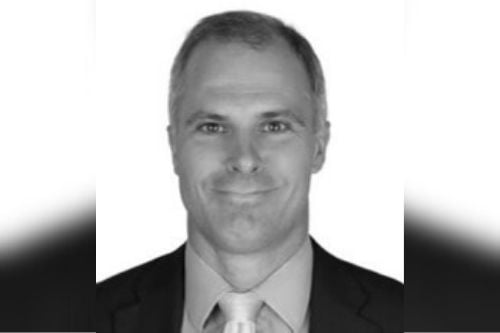

It’s the key advice shared regarding what to do after you have a near miss while driving – take the time needed to calm down and drive very carefully afterwards. COVID-19 was a shock to the systems of organisations globally and now this same advice is what they need to hear and adhere to when it comes to managing risk going forward.
The speed at which COVID occurred and the implications it holds has surprised a lot of even the most mature organisations, according to David Stark (pictured), consulting director & practice leader of enterprise risk services at Marsh Advisory, and it has made them sit up and pay attention. In the early days of the pandemic there was a degree of risk blindness with regards to the impact of COVID, he said, but in a post-COVID world, people are starting to reconsider significant dynamic risks and how the frameworks around risk governance, controls and foresight can help mitigate them.
“[COVID is one such risk] but we’re also looking at another one – the climate crisis,” he said. “And climate is slightly different in that, to a degree, you’ve a longer lead-in time so things don’t necessarily change overnight. But there will be tipping points that are reached, whereupon it will be hard to turn the clock backwards.
“To some extent, there has been some naivety in the business world around the climate crisis, with it being viewed as a government or societal problem, and businesses saying, ‘We’re doing our best, we’re as green as we can be. Let’s keep going on this trajectory’. It has been a bit more passive than active, whereas now, with COVID, a lot of organisations are deciding they’re going to be a bit more active, and they’re willing to go over and above.”
In the past, these kinds of ‘societal risks’ may well have been on the risk register of organisations, he said, but they tended to be qualified by concerns that they were either too difficult to deal with, the responsibility of somebody else, or too unlikely to happen. It’s Marsh’s raison d’etre to encourage a 360-degree view of risk within clients, as seen through its contribution to the WEF’s annual Global Risk Report, and Stark has long promoted the need to understand the dynamic nature of risk and the role of agile thinking in responding to that.
A tick-box exercise approach to risk that examines the challenges facing a business and pinpoints what risks need to be taken to achieve strategic goals is an approach that may have worked in a ‘business as usual’ world but increasingly, organisations no longer live in that world. Reinforcing that shift is the striking change in societal trends, he said, in particular, around transparency which is something he has been discussing with the market for quite some time.
“If we turn back the clock to the 1970s, even the 1980s, there was a [perception] that it wasn’t the role of society to challenge businesses or to challenge governments. And society would have low expectations of the information shared by those two areas,” Stark said. “Now it’s the polar opposite and there’s a high expectation of transparency, trust and accuracy.
“And now there’s the lasting footprint of information these days, where you can easily research what somebody said on a certain day without having to go to your local library and go through old newspapers anymore. You can quickly go on to Google and find out who said what. So there’s a new degree of accountability, which I think scares a lot of people.”
Where once upon a time the conversation among business people would focus on ‘shareholder value’ only, Stark emphasised that now more executives and boards talk about ‘stakeholder value’ and take into account the wider impact that their business is having on society more generally. Again, the role of a digital-first society comes into view as the internet and social media platforms have given power to a new generation of lobbyists. These can be a powerful force for good, he said, but done badly or by those with ill intent, it only creates noise and confusion amid an already uncertain and confusing risk landscape.
For the risk manager who has to deal with navigating those challenges, the pressure is on to become more actively engaged and focused on the future rather than simply going through the motions of reiterating risk measures that have worked in the past. Stark has seen a fair few mature organisations, many of whom he is delighted to work with, already stepping up to the plate to meet that changing requirement though others are still contemplating their next steps
“So, we are having those conversations, and we expect to increasingly have them as well, as that realisation comes to many organisations, or they [dedicate] more resources to advice,” he said. “And that will move them away from firefighting to forward planning. I’ve seen good examples of insurers pulling together well, with brokers and with clients, rather than having everyone siloed. There have been some good examples across the industry where people have collaboratively moved forward.”
